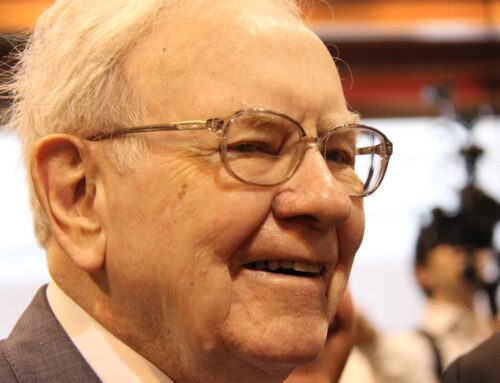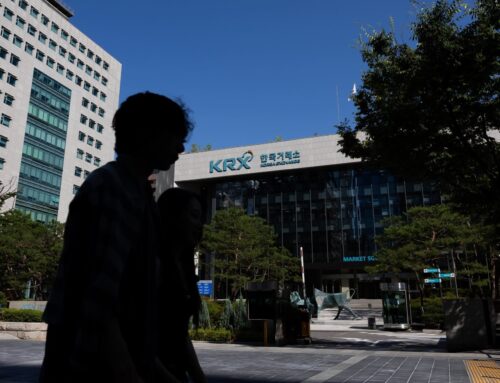Is Investing In Musk’s Autonomous Robotaxis Too Risky? 3 Experts Weigh In
June 8, 2025
Tesla has defined bearish investors for many years. People criticized the valuation when the corporation was worth $10 billion and those voices rang louder when the company reached a $100 million market cap.
For You: 12 Best Safe Investments To Grow Your Money in 2025
Powered by Money.com – Yahoo may earn commission from the links above.
Read Next: 10 Genius Things Warren Buffett Says To Do With Your Money
According to Bloomberg, the electric vehicle (EV) maker’s valuation now hovers at around $1 trillion, but each rally makes it more difficult to generate future gains. For instance, Tesla would have to become a $10 trillion company to generate a 10 times return for its investors. You don’t need a stock to 10 times to beat the market and some investors believe that Tesla’s upcoming robotaxis presents a compelling long-term opportunity.
However, some people have expressed concerns that autonomous robotaxis are risky and may lead to significant losses for investors if they fall short of expectations. Here’s what some of the experts think about investing in Musk’s autonomous robotaxis.
While Tesla is no stranger to a rich valuation, the stock’s ability to perform well in the long run heavily depends on robotaxis and humanoid robots delivering on their long-term potential. These are well-known catalysts, but it’s important to consider the risk of what would happen if those initiatives fall short of expectations.
Dan Buckley, financial markets commentator at DayTrading.com, compared Tesla’s valuation and catalysts to taking out a call option.
Check Out: I’m a Financial Advisor: 4 Investing Rules My Millionaire Clients Never Break
“Tesla’s robotaxi and humanoid bot ambitions might excite headlines, but investors are still paying venture-capital prices for a public company. Its valuation is effectively a call option on a highly uncertain future — where demand for these emerging technologies, Tesla’s ability to execute on them and the economics of production all remain unproven — as well as highly regulated and capital-hungry.”
John Ellmore, editor and spokesperson for Electric Car Guide, also expressed concerns that Tesla isn’t the frontrunner in the autonomous vehicle industry. Although Tesla has the spotlight due to Elon Musk and its reputation as an EV maker, Ellmore highlighted how one competitor is miles ahead of Tesla.
“The launch of Tesla’s robotaxi comes with plenty of hype, but it’s important to remember that Tesla is not ahead of the game in autonomous driving — Waymo is by far the more established player. Betting on Tesla for robotaxis today is absolutely a risk. Tesla is relying on future tech narratives to justify its valuation.”
Waymo is one of the companies under the Alphabet umbrella. Investors who buy Alphabet also get exposure to Google, YouTube, Google Cloud and the tech conglomerate’s additional business segments. It’s more diversified than Tesla and has a much lower P/E ratio.
Many futuristic movies and cartoons depict flying cars and other inventions that we haven’t achieved at this time. For instance, “Back to the Future” predicted that we would have flying cars in the year 2015. We still don’t have flying cars and it’s a cautionary tale that demonstrates how innovative investments can become duds.
Robert R. Johnson, Ph.D., chartered financial analyst (CFA), chartered alternative investment analyst (CAIA), professor of finance at Creighton University’s Heider College of Business, cautioned people against investing in companies that rely on innovation to justify their valuations.
“The problem with investing in innovation is that too often, investors are overly optimistic about its potential. For all but the most optimistic of speculators, I believe investors would be wise to steer clear of Tesla,” he said.
Innovative companies going bust is nothing new. EV makers like Nikola Motors and Workhorse are shells of their former selves after they attracted plenty of speculative investors in 2021. Space exploration companies like Virgin Galactic also had their stock prices go to orbit before crashing down to Earth.
Some innovations are real, while others are exaggerated fantasies. However, investors have to look at a company’s current financial numbers before deciding if it’s a good investment.
More From GOBankingRates
-
Mark Cuban Warns of ‘Red Rural Recession’ — 4 States That Could Get Hit Hard
-
4 Housing Markets That Have Plummeted in Value Over the Past 5 Years
-
How Far $750K Plus Social Security Goes in Retirement in Every US Region
This article originally appeared on GOBankingRates.com: Is Investing In Musk’s Autonomous Robotaxis Too Risky? 3 Experts Weigh In
Terms and Privacy Policy
Search
RECENT PRESS RELEASES
Related Post




